If you’ve seen any of my posts here on GLITCHED, it should be pretty clear that I absolutely love comic books. I can still remember receiving my first ever comic like it was yesterday, an Archie Double Digest that my dad brought home for me. That quickly spiralled into me wanting every single comic I laid my eyes on. I didn’t care about genre, or if I knew who the superhero was, I just wanted all of them. This was also where the collector in me was born – thanks, dad.
Because my love for comics started so early, I was lucky to ask all the annoying questions before I was old enough to no longer be comfortable doing that, meaning I grew up already knowing most of what’s what’s in the comic world. However, most people I know never grew up in and around the comic world as I did, and now, as adults, they feel completely alienated by it all and don’t know where to even start. This post is for them. If you’ve ever wanted to get into reading, collecting, buying or selling comics but feel at a complete loss with all the comic book speak thrown your way, then this post is for you. I’ve put together a list of terms and helpful info that should be enough to get you started in no time – enjoy.
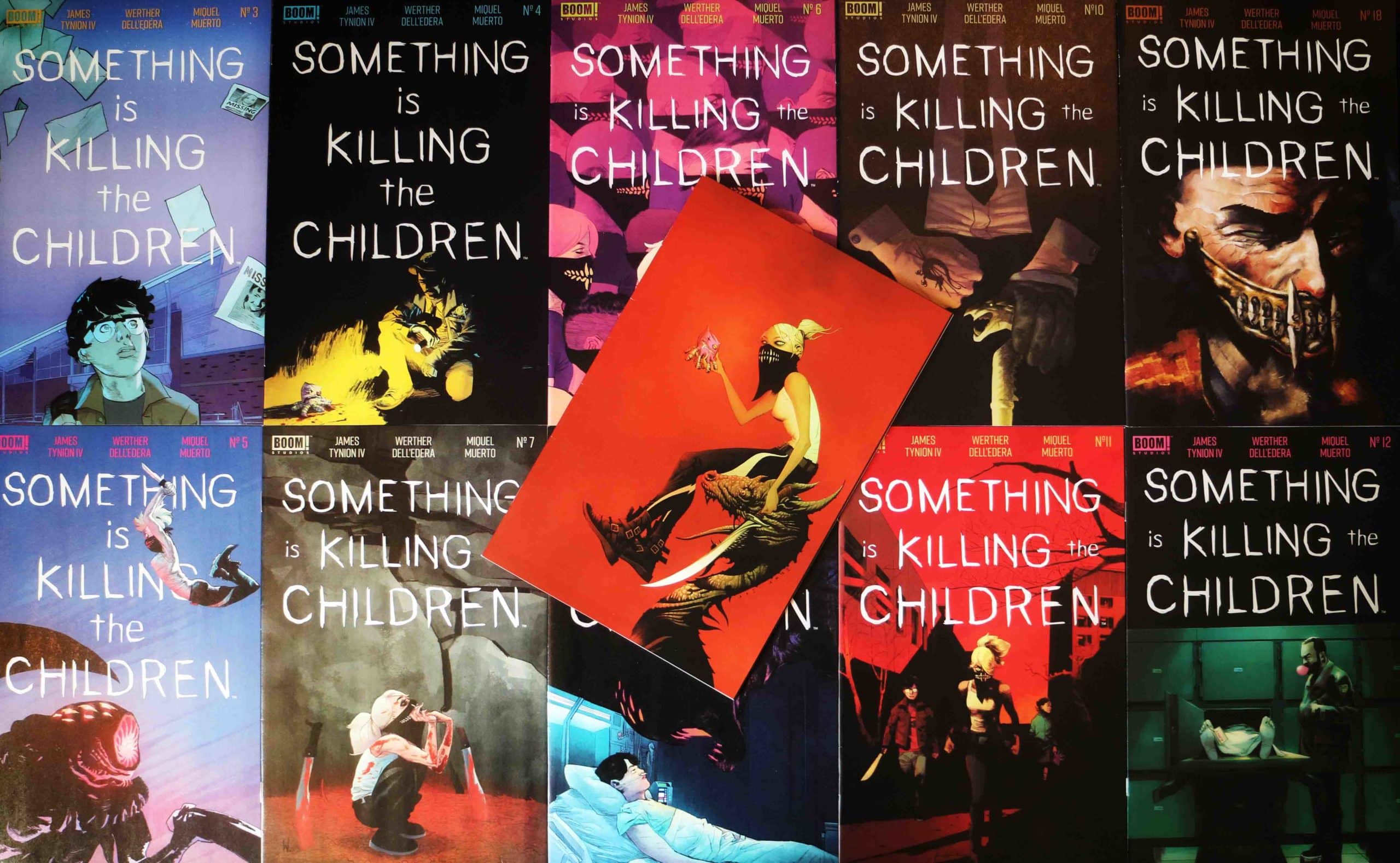
Comic Books and Where to Find What?
Okay, so you’ve just walked into a comic book shop for the first time. Where do you go? Where do you start? You can find most comic books divided into “The Big Two” and “Indies”, but what does that even mean?
The Big Two refers to Marvel and DC comics, the two biggest publishers around. This is where you’ll mostly find your superhero comics. So if you’re looking for the latest Batman, Harley Quinn or Superman comics, you’ll find them under DC. However, if you’re looking to pick up Iron Man, Hulk or Dr . Strange comics, you’ll find them under Marvel. Marvel and DC – or The Big Two – are usually stored close together in the same section of the shop.
The other section you’ll see is the “Indie” section. Indies are pretty much any comics published by anyone who isn’t part of The Big Two. This is where you’ll find comics published by: Image Comics; IDW Publishing; Boom! Studios; Dark Horse Comics; and Omni Press. There are lots of other Indie publishers, but these are the bigger ones. This is where you’ll head if you want to pick up titles like “The Walking Dead”, “Invincible”, “Something is Killing the Children”, or “Y: The Last Man”.
Pro Tip: Within these two sections, you’ll probably find that comics displayed alphabetically, similar to how CD shops used to work.

Comic Types To Look Out For
Now you’re in the right section, you’ve found the series you’re interested in, but you face another problem, which of the many formats do you pick up? Comics are usually divided into:
- Single Issues or Floppies: These are different names for the same thing and are probably what jumps into your mind when someone says “comic”. Single Issues or Floppies are thin, paperbound and usually between 20 and 40 pages long. Each Single Issue tells a small part of a larger story and usually comes out every two weeks or monthly. You will need to collect every Single Issue that comes out to experience the whole story.
- Trades, Trade Paperbacks (TPs) and Graphic Novels: This is the next step up from Single Issues or Floppies. Trades, Trade Paperbacks or TPs are always paper bound books with a flat spine. They are a collection of Single Issues that have been bound together. Each “Trade” usually contains roughly five Single Issues collected within. Trades are a great way to read comics that have been out for a while and that you’ll battle to find all the Single Issues for. TECHNICALLY Graphic Novels refer to a story collected in the Trade Paperback format, but that was never released as Single Issues. However, people mostly use the term interchangeably with Trade, Trade Paperback and TP. Regardless of if a book is an actual Graphic Novel or not, use the word, and everyone will know what you’re talking about.
- Hardcovers: Come in MULTIPLE different types depending on what you’re looking for. Standard Hardcovers are generally the same size as Single Issues or TPs. They are also collections of Single Issues, same as TPs, but they usually contain between 5 and 10 Issues. You also get Deluxe Edition Hardcovers which are generally slightly larder than regular hardcovers. Deluxe Editions contain anywhere between 10 and 15 Single Issues. They usually come with some never before seen content – sometimes it can be the scripts used for the comics, sometimes unique artwork – but there is pretty much always a little something extra inside.
- Library Editions; Ultimate Editions; Absolute Editions; Oversized Hardcovers and Omnibuses. Bar for Omnibuses, all the rest are different names, used by different publishers, for the same thing. Omnibuses are huge books. They can be either paper or hardbound, and they usually collect an entire story, from beginning to end, within just one book. I don’t collect Omnibuses because I find them challenging to read, but they are a fantastic way to make sure you can get your hands on a complete story without having to try and buy each Single Issue, TP or Hardcover separately.
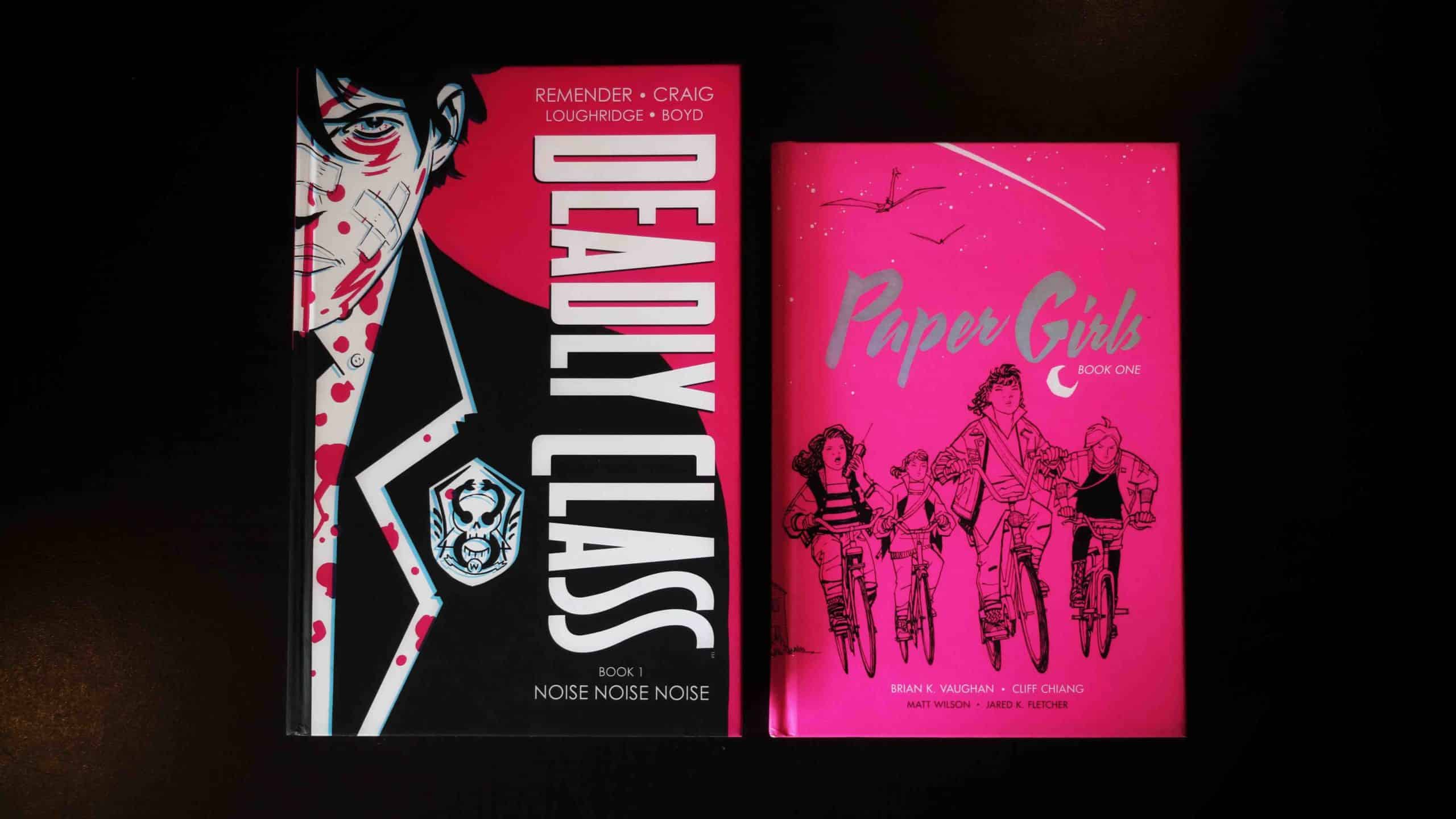
As I said above, Library Editions, Ultimate Editions, Absolute Editions, Oversized Hardcovers and even Deluxe Editions are all pretty much the same thing under different names. They are bigger and thicker than regular hardcovers, and most of them collect roughly 25 Issues per book. Like with Deluxe Editions, all of these will usually contain something special inside for you – be it an extra “special” issue or just never before seen artwork. In the pictures above and below, you can see how my Deluxe Edition Deadly Class compares to my Deluxe Edition Paper Girls in terms of size and thickness.
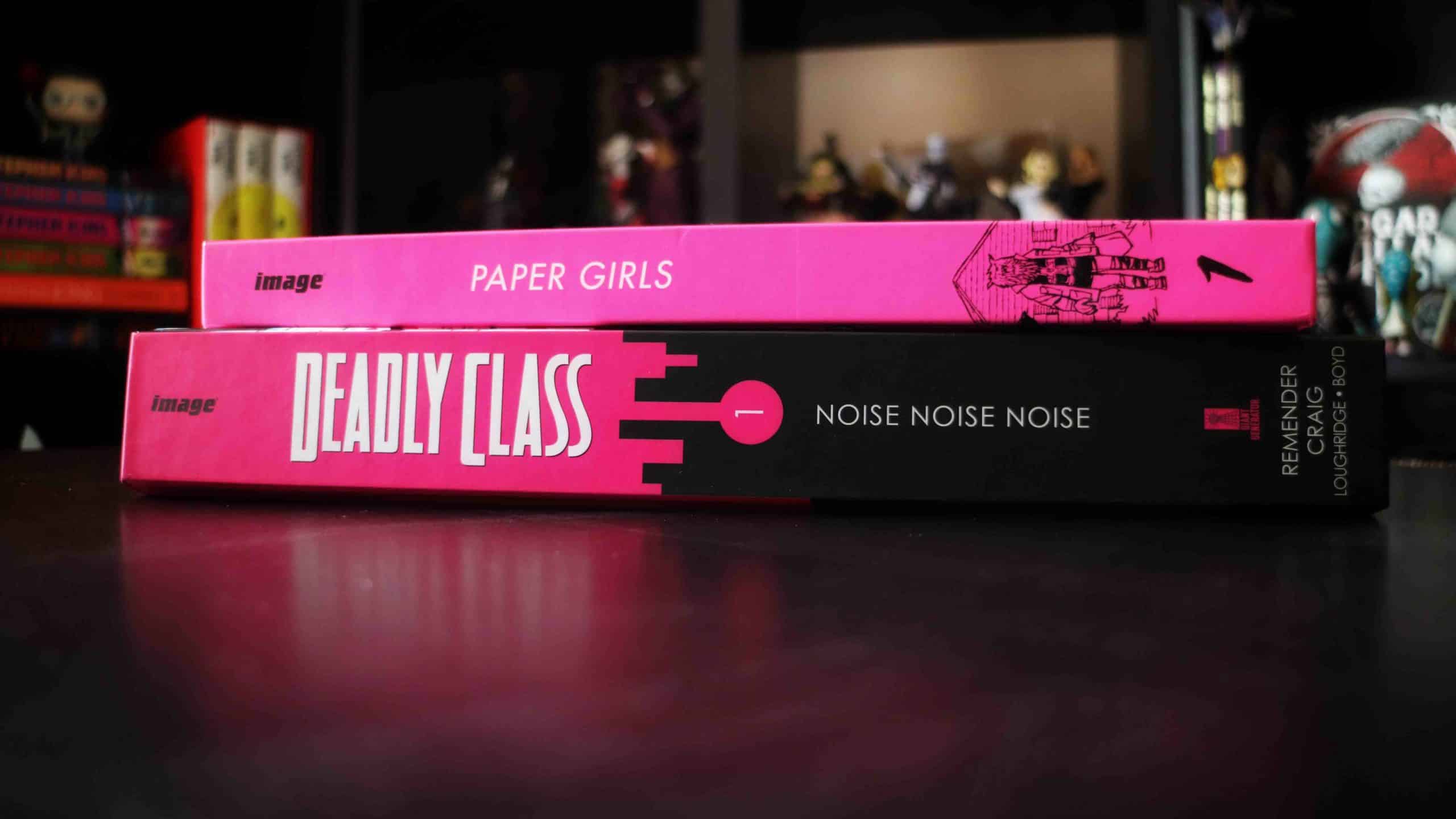
Comic Book Variants and How to Tell What You Have
Okay, so now you’ve found the section of comics you’re interested in, you’ve found the story you want to collect, and you’ve decided you want to collect the Single Issues or Floppies. But more than just to read them, you want to collect them to resell. So what now?
When it comes to Single Issues or Floppies, there are a few things you might want to know. The first thing you want to know is what variants are? Variant comics are “limited” or “special editions”. They contain the same content as their regular counterparts, but their covers are always different.
The types of variants you get are:
- Blind: these are entirely blank covers. You would usually buy one of these and then pay an artist to create a custom cover drawing for you.
- Virgin: these covers have no text over the art.
- Regular variant: These look like standard covers, their art is just different.
If you look at the image below as an example, all of them are first prints. The first issue is a Virgin variant, the second issue is a regular variant, the third issue is another Virgin variant, and the following two issues are just regular issues.
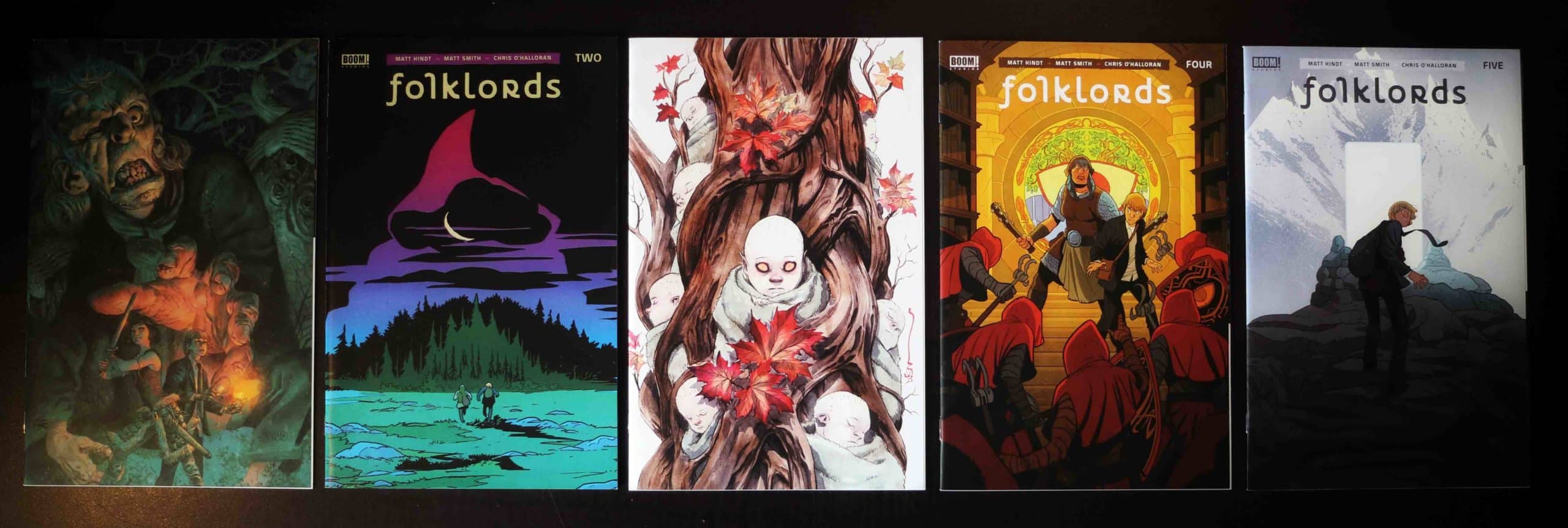
Comic Book Barcodes and What The Numbers Mean?
Now you might be asking yourself three things, 1) What are first prints? 2) How can I tell that Issue 1 and Issue 3 are actually Issue 1 and 3 when no numbers are demarking that on the cover and also, 3) how can I tell that Issue 2 is a variant and not just the regular cover? Well, this is where we get to have some fun and look at the comics barcodes.
Looking at the barcode below, we can see that next to the main barcode is a second smaller one. Above the smaller barcode, there are five numbers. These five numbers will tell you everything you need to know,
Now let us break down what these numbers mean. In this case, the first three digits, “001”, refers to the issue number of the comic. So now we know that my comic is issue #1. If it was a long-running series, and let’s say I had issue number 300, then the first three digits would be “300”. The fourth digit of the code is “2” this tells us that my comic is a variant. Regular comics always have a “1” assigned to them. Any other number tells you that your comic is a variant. The last digit in my barcode is “1” this tells us that this particular comic is a first print. Like with books, comics have first prints, which are usually more valuable than second or third print runs.
So if we look at the barcode for the first comic again, “00121”, and break it down: “001” = Issue #1. “2” = Variant. “1” = First Print. And that’s it. That’s how you can get all the info about your comic directly from the barcode. While this won’t be something that most even think about, it is handy to know if you plan to sell comics or buy them as collector pieces. Also, it’s just pretty interesting.

Comic Book Terms
There are a few terms that are used quite often and are good to know, and they are:
- Mini-Series: usually 12 issues or less.
- Maxi-Series: usually 12 issues or longer.
- One-Shot: Single story completes in one issue
- On-Going: the story is still being published.
- Key Issue: often highly collectable, usually has a first appearance or a significant death in it.
Now you know how to find the comics you’re looking for in the comic shop, you know how to choose which format you want to collect, you know how to find out if your comic is a first print or variant. You also understand what a Key Issue and a One-Shot is. The only thing left to know is what quality your comic is. Again, this isn’t something that most people would ever care about, but if you find yourself wanting to buy a second-hand comic or sell one of yours – it’s something you should know.
Comic Book Grading System
The grading system for comics is as follows:
- Mint: This is a comic that is pretty much perfect. There are no blemishes, marks, scuffs or folds.
- Near Mint (NM): This is a comic that’s close to perfect but might have a slight imperfection
- Very Fine (VF): This is close to NM but has a minor scuff or blemish you can see when looking at it
- Fine (FN): This is a comic that has some wear. It’s not bad quality, but it has some visible blemishes.
- Very Good (VG): This is a comic that you can see has been read and handled. There are folds, creases and blemishes
- Good: This is a book that has a lot of wear to it. You can still read it, but it won’t be a collector’s piece.
- Fair: This is a copy that’s seen A LOT of hands and been read multiple times. You should still be able to read it, but it won’t look that great
- Poor: This is as bad as it gets. This comic has been read on the toilet, it’s been read in the bath, and it’s been thrown into a bag to be read on the go more than once.

Finally, let’s touch on one of my all-time favourite comic resources League of Comic Geeks
Once you start collecting comics, you’ll want an easy way to catalogue them so that you can quickly know what Issues you’re missing and which series you want to keep an eye out for. That’s where League of Comic Geeks comes in. The site lets you easily list which comics you already own, lets you set reminders for when new issues come out for the series you want to collect and enables you to connect with other comic lovers.
And that’s it. You should now be ready to go into any comic book store you want and own the place with all your newfound knowledge. But remember, with great power comes great responsibility. I hope you found this list helpful, and if you still have a burning question, pop it in the comment section below, and I’ll be sure to help however I can. Now go forth, buy all those comics you’ve always wondered about and join me in being perpetually broke. It’s fun here.

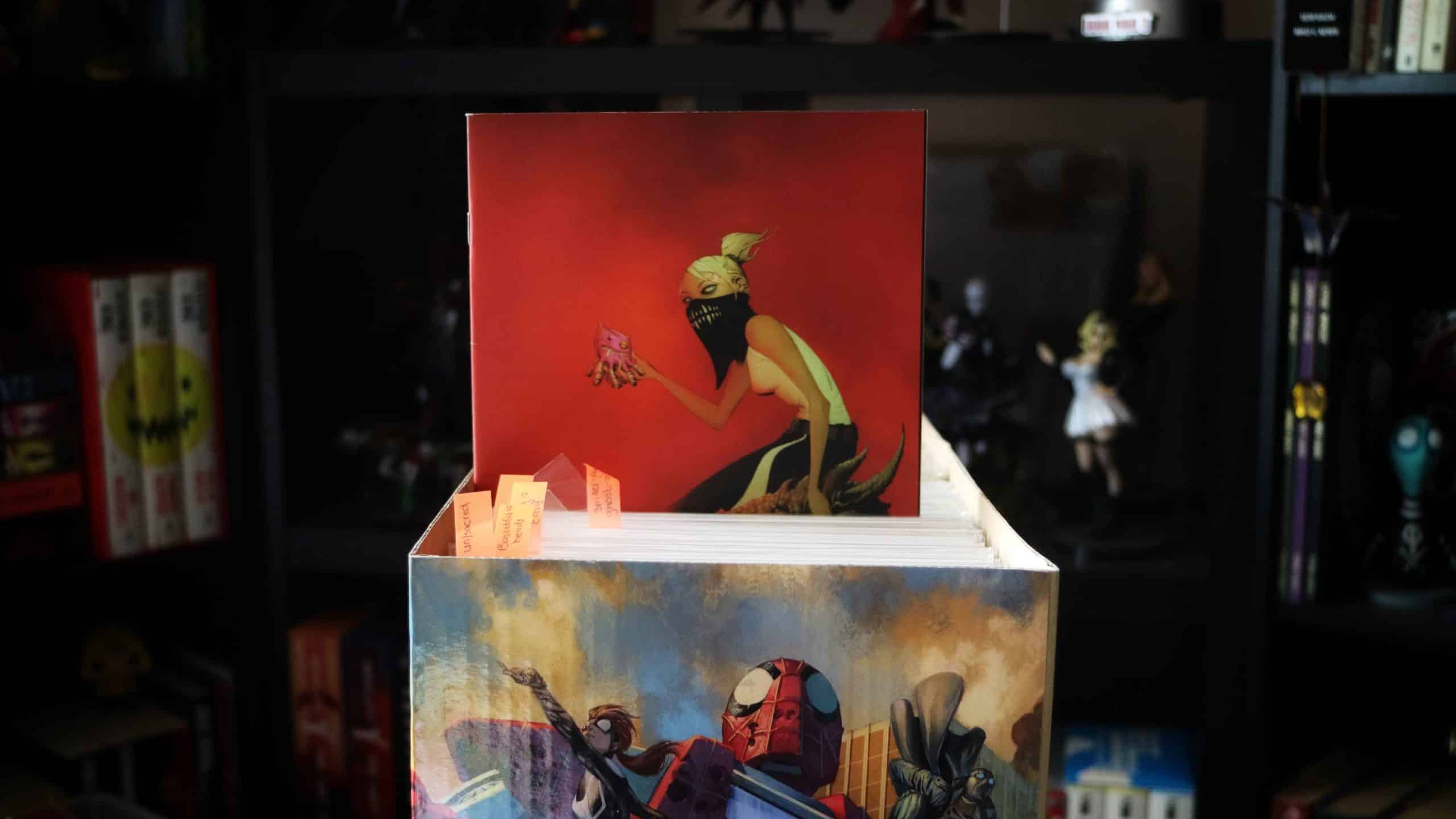
1 Comment